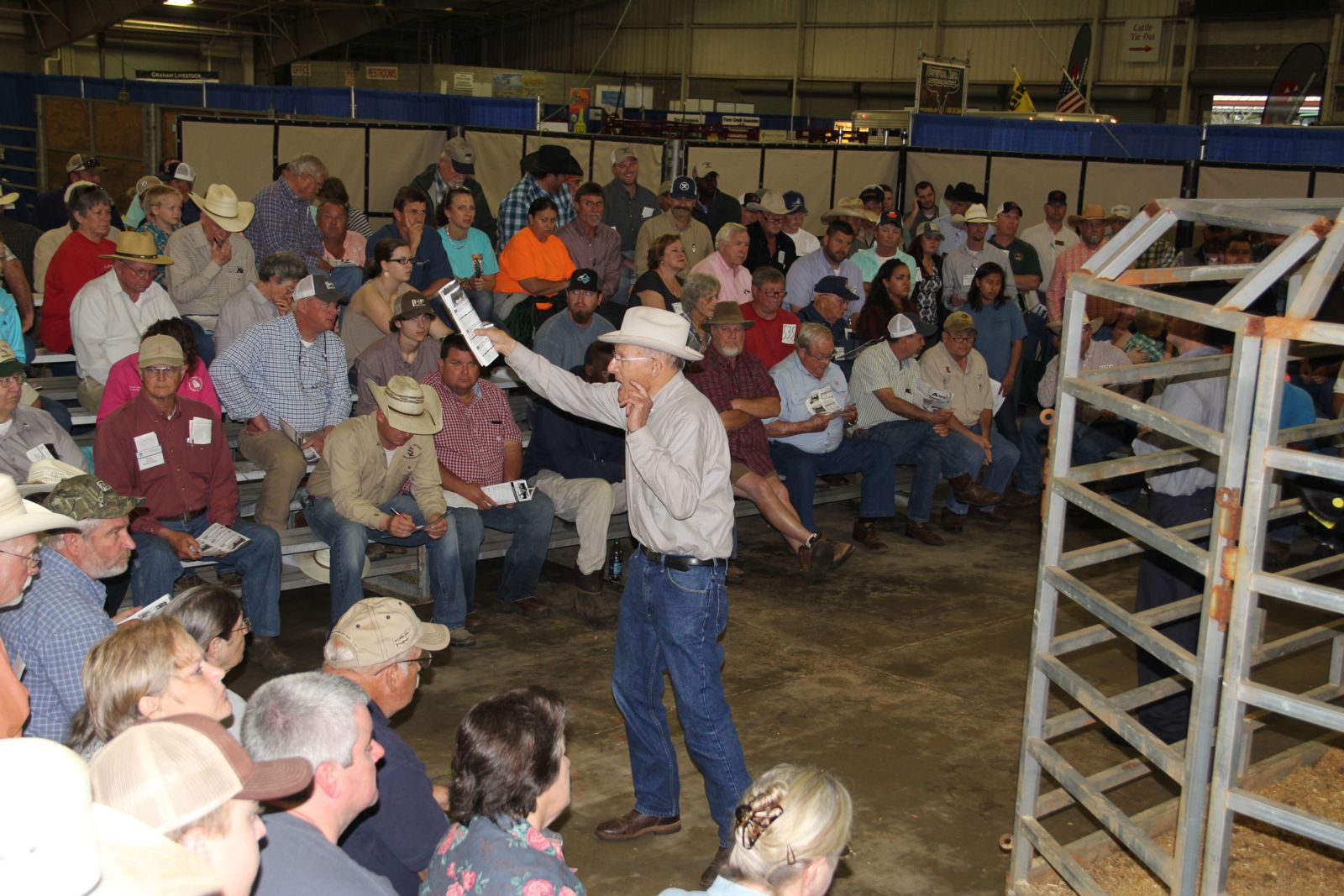Ag News
COVID-19 puts livestock auctions in tough situation
Posted on Mar 20, 2020 at 0:00 AM
By Jay Stone
Georgia Farm Bureau
Georgia’s livestock markets are accustomed to wrangling cattle, following time-tested methods of moving the animals into and out of sale barns.
Now, in the interest of curbing the spread of COVID-19, they’re being asked to wrangle humans, as well.
In typical fashion, the agriculture sector is looking for ways to persevere, knowing consumers have to be fed.
On March 19, the U.S. Department of Homeland Security identified food & agriculture among the industries that are essential to continuing America's critical infrastructure during the COVID-19 response.
“Our markets, we consider them part of the critical infrastructure for the food supply,” said Livestock Marketing Association (LMA)
Region Executive John Kissee, whose region includes Georgia. “Producers need to market their livestock to have money to pay bills, to plant future crops, to buy feed for their animals. For many different reasons, that’s why our markets need to stay open.”
The LMA issued a set of suggestions paralleling governmental guidelines for disease control – primarily social distancing and cleanliness. The White House’s recommendation that gatherings be limited to 10 people is problematic in the sale barn setting.
Georgia Farm Bureau media contacted nine sale barns around the state to see if and how their operations had changed in the first week of the ramped-up response to COVID-19.
For the most part, they carried out their business in their usual manner, with mixed approaches to human disease control, ranging from limiting foot traffic by people who don’t intend to buy cattle to intensifying cleaning efforts, particularly in areas where people congregate.
All nine reported sharply reduced sales numbers from the previous weeks and lower purchase prices overall, though prices seemed to be holding well for cattle being sold for slaughter. The markets’ general consensus is that COVID-19 is at least a contributing factor in low sales numbers and low sale prices.
At the Carroll County Livestock Sales Barn (CCLSB) Monday, approximately 190 head of cattle were sold at the facility’s weekly sale, which typically moves around 500 cattle. CCLSB Board Chairman Alan Banks said prices for calves were down between 40 and 50 cents per pound.
“That’s a terrible cut,” Banks said. “You can’t pay the bills with that.”
Sale barn operators are worried about protecting the health of those who work for the stockyards and those who attend the sales. The ones contacted by GFB indicated they were paying extra attention to cleaning the areas where humans gather.
“We’re providing hand sanitizer and just trying to make sure there wasn’t anyone who was here that was sick,” said Mike Sanders of Moultrie Livestock Company.
Social distancing? “If [the disease continues to] progress, it might be something we consider,” Sanders said.
LMA suggests that stockyard operators urge sellers to drop off their cattle and leave if they aren’t planning to buy cattle. That’s a tough ask for a business built off face-to-face interaction.
“This is kind of a funny business,” said Clay Floyd of Swainsboro Stockyard. “You’ve got to be real particular about telling people not to stay and watch. That’s a touchy thing.”
In Carroll County, the board of directors considered shutting down its weekly sale at CCLSB, but Banks said the CCLSB board decided to continue under social distancing guidelines - limiting visitors and spectators, closing its dining facility and asking sellers to drop off their animals and leave.
Livestock sales have a social aspect that put the stockyards in a difficult position on the subject of social distancing. People come and visit with longtime friends, have a meal and watch the sale.
Some stockyards are altering how they serve customary sale-day meals.
“We’re business as usual other than we won’t be offering dining here,” said Upson County Livestock Owner Anna Sutton White. “We’re trying to do what’s right to keep our part of the economy going so we can feed the American public.”
If you’ve been to a grocery store in the past week, you likely have seen unusually low or no stock in the meat department. Even with strong demand, cattle prices have declined this week. Several stockyard operators said producers are opting not to sell in hopes the prices they receive for their cattle will increase.
“The prices are so bad, nobody wants to sell them right now, but there are people who have to,” said Mark Smith of Eastanollee Livestock Auction.
The sale barns may not have the answers yet, but most seem confident they’ll find ways to stay in business.
“Livestock markets have been around for a long time,” Kissee said. “We’ve faced lots of different challenges. We are confident that our people, our producers, will weather this storm, too.”
- Categories:
- Tags:
